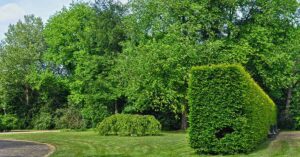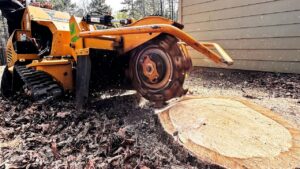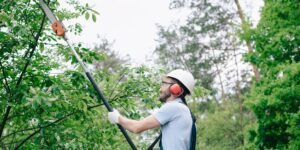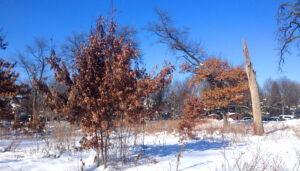Tree trimming is not only essential for maintaining the health and appearance of your trees but also for ensuring the safety of your property and your family. However, if done incorrectly, it can pose significant risks. Whether you’re a seasoned gardener or a weekend warrior, understanding the basics of safe tree trimming is crucial. This comprehensive guide will walk you through the essential safety gear, identify common hazards, and explain when it’s time to call in the professionals.
Essential Safety Gear
Before you begin trimming, gearing up with the right safety equipment is a must to protect yourself from potential injuries. Here is a list of essential safety gear:
- Safety Glasses or Goggles: Protect your eyes from flying debris, dust, and branches.
- Gloves: Wear thick gloves to safeguard your hands against sharp branches and thorns.
- Hard Hat: Use a hard hat to protect your head from falling limbs.
- Hearing Protection: If you’re using power tools, protect your hearing with earplugs or earmuffs.
- Non-Slip Boots: Ensure your footwear provides good grip and foot protection.
- Long Pants and Long-Sleeved Shirts: Protect your skin from scratches and irritants.
Understanding Common Hazards
Recognizing the risks involved with tree trimming can help you mitigate them effectively. Here are some common hazards to watch out for:
- Falling Branches: Even small branches can be heavy and dangerous when they fall from a height.
- Power Lines: Trees near power lines pose a significant risk. Always assume that wires are live and dangerous.
- Improper Equipment Use: Using tools like chainsaws without proper knowledge can lead to accidents.
- Unstable Ladders: Using a ladder on uneven ground can cause falls, so always ensure it’s stable before climbing.
- Overexertion: Take regular breaks and stay hydrated to prevent overexertion, which can lead to mistakes.
Safe Tree Trimming Practices
Following safe practices not only ensures your safety but also helps you achieve better results with your trimming efforts.
Plan Your Approach
- Inspect the Tree: Look for dead or diseased branches that need removing and identify the best order to tackle them.
- Check the Weather: Never trim trees in bad weather, especially if it’s windy or wet, as this increases the risk of accidents.
Use the Right Tools
- Choose the Correct Tool: Use shears for small branches and a chainsaw for larger limbs.
- Maintain Your Tools: Ensure all tools are sharp and in good working order to make clean cuts that heal quickly.
Trimming Techniques
- Don’t Over-Trim: Removing too much foliage can stress the tree. Never remove more than 25% of a tree’s crown in one season.
- Make Proper Cuts: Cuts should be made at the node, where the branch connects to another branch, to promote proper healing.
- Remove Hazards: Always start by removing any dead, damaged, or diseased branches to improve the tree’s health and reduce weight.
When to Call a Professional
DIY tree trimming is suitable for small jobs, but there are times when it’s safer and more sensible to call in a professional:
- Height Concerns: If any branches needing to be trimmed are high up or the tree is tall, it’s safer to hire an arborist.
- Proximity to Power Lines: Never attempt to trim trees near power lines yourself. This is extremely dangerous and often illegal.
- Large Branches: If branches are thick and heavy, they can cause injury if not handled correctly. Professionals have the right tools and training.
- Diseased/Infested Trees: If a tree is diseased or infested with pests, a professional can advise the best course of action to prevent spreading.
Conclusion
DIY tree trimming can be a rewarding activity that helps keep your trees healthy and your property looking its best. However, it requires a good understanding of safety practices, the right equipment, and a sensible assessment of your own limits. Remember, when in doubt, it’s best to consult or hire a professional to handle the job safely and efficiently. By following these guidelines, you’ll ensure that your tree care efforts are successful and safe.



